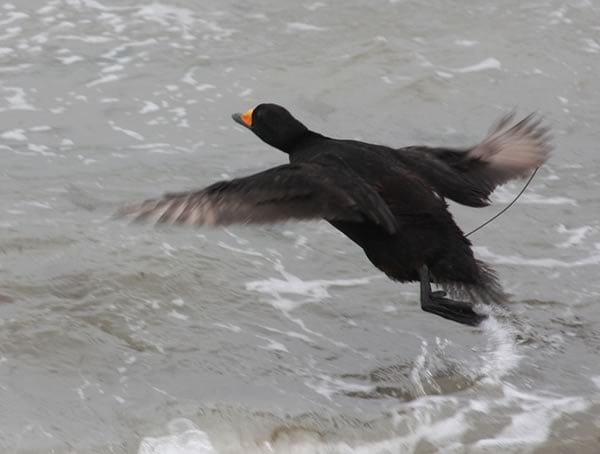SDJV96 Interim Report FY07
SDJV96 Interim Report FY08
SDJV96 Interim Report FY09
SDJV96 Interim Report FY10
SDJV96 Final Report
Pacific Black Scoter Breeding Survey

Project Number: 96
Year Funded: 2012
Lead Institution(s): US Fish and Wildlife Service
Project Lead: Robert Stehn
Collaborator(s): Fairbanks and Juneau Field Stations, Yukon Delta NWR, Alaska Peninsula NWR, Selawik NWR, Tokiak NWR
Location: Alaska
Focal Species: Black Scoter (Melanitta americana)
Project Description: This project represents the eighth year of aerial surveys to monitor Alaska’s breeding population of Black Scoters, conducted in 2012. Two observers recorded all Black, White-winged, and Surf Scoters and Greater or Lesser Scaup within a 200m strip on each side of the aircraft using standard aerial survey protocol. Front- and rear-seat double-count observations allowing a mark-resight estimate of detection rate were not conducted in 2012. The timing of the survey was two to three weeks after the standard North American Waterfowl Breeding Pair and Habitat Survey and appropriate for late-nesting diving duck species. We designed the survey based on the distribution of scoters documented by extensive surveys of Alaskan wetlands flown 1989 to 1997. From 2004 to 2007, we flew systematic transects sampling 154,645 km2 of tundra wetlands divided into 12 strata of high and low scoter density in various geographic regions. Using results of these four-years we redesigned the survey in 2008 to be more efficient by excluding some areas of low density and increasing sampling where variance was high. Transects flown 2008-2010 and 2012 sampled 113,732 km2 of wetlands in six strata covering 74% of the original area and 84% of the 2004-07 average scoter population.
Project Reports:
